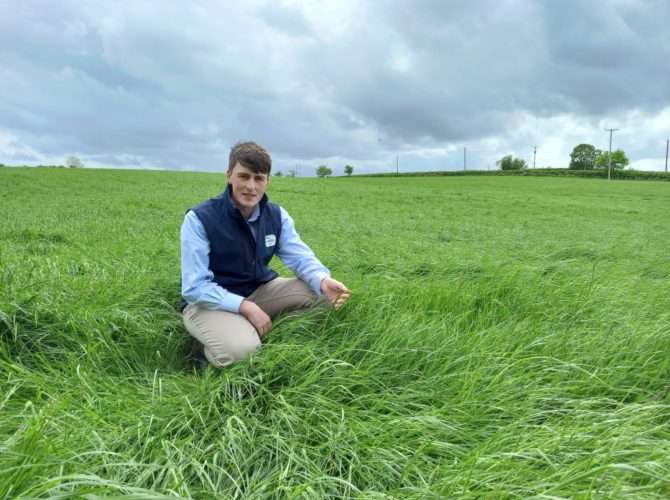Improving Nitrogen Use Efficiency and Performance Through Reseeding.
19th May 2022

Reseeding grassland can will improve grass yields and quality, resulting in higher performance. Recent sward assessments ahead of first cut silage found that newly sown swards were growing 11- 29% more dry matter than older swards despite receiving the same amount of nitrogen as older swards.
Grass is the cheapest feed source for ruminant livestock, costing as little as ¼ the price of concentrate. Maximisation of grassland production and the animal performance from grass, is a major driver of profitability on farm. Research conducted in Ireland found that through reseeding as little as 5% of your grassland each year improved farm profitability by 19%. Target should be 10% of the farm reseeded each year. The increase in grass production allowed higher stocking rates to be achieved alongside improving stock performance from grass. The study found that irrespective of milk price reseeding had a positive impact on profitability.
Nitrogen use efficiency (N.U.E) is greatly improved following reseeding. Yield assessments completed on a local farm in Co Down before silage was cut last week, found that there was a 62% increase in nitrogen use efficiency from a reseed established last autumn, compared to a 10-year-old sward on the same farm. Both swards received the same fertiliser and slurry applications but yield and quality was much higher for the reseeded land. The reseeded field produced over 7T/ha Dry Matter (11.6T Fresh Weight per acre), compared to 4.4 T/ha Dry Matter (7.2T Fresh Weight per acre) for the 10-year-old sward. Fresh analysis shows a 0.5 benefit in ME, and 2% more protein. for the reseed as well.
Although this reseed did not have clover in the mixture, the inclusion of clover into the reseed increases the nitrogen use efficiency even more due to the legumes ability to fix nitrogen from the air.
If you are thinking of reseeding this spring/summer, you should first identify fields with low levels of desirable species such as perennial ryegrass, and or weed infestations. Before sowing new grass, it is important to ensure the conditions are correct for the sward to establish well, any fertility or drainage issues should be corrected. Soil fertility can be determined from recent soil analysis. The soil pH should be a minimum of 6.3 to establish grass and 6.5 for clover swards with P&K indexes of 2 or 3. If a soil has it at phosphorus index 2 it will require 40 units of phosphorus and an index of 2- for potassium will require 48 units of potassium. In terms of nitrogen 48 units are also required to get the sward off to a good start however if the new sward contains clover this nitrogen is not needed.
Reseeding after taking a cut of silage is a good opportunity to reseed, through a full cultivation/ploughing if there are any soil compaction issues, or with direct drilling but if the soil is in good condition reducing the time the field is out of production.
Fane Valley stock a range of grass seed mixtures to meet the needs of your farm, backed up by a team of agronomists to give you the best advice to ensure your reseed is successful.
If you are considering reseeding this spring call into your local store, contact your Fane Valley representative or call our Agronomy & Forage team on 028 9261 0485.

